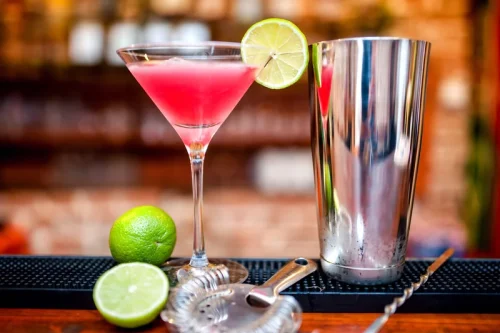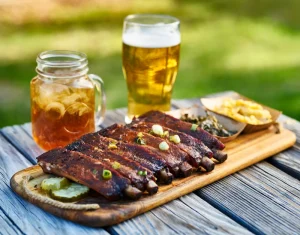Alcohol Allergy Rash: Identifying, Treating, and Preventing Symptoms 2024

A person experiencing a severe allergic reaction should go to the emergency room immediately. Depending on the allergy severity, a person may treat symptoms with over-the-counter medications, such as oral antihistamines, if the reaction is mild. If a person is allergic to a particular ingredient found in some drinks, they could switch to drinks that do not contain it. However, some people with Hodgkin lymphoma experience pain in their lymph nodes after consuming alcohol.
Causes and Symptoms

People with an alcohol allergy should exercise caution when eating or drinking anything that they have not prepared themselves. Some signs of anaphylaxis include swelling, itching, tightening of the throat and mouth, a weak or rapid pulse, fainting, shock, and loss of consciousness. People with mold or yeast allergies may have an allergic reaction to the brewer’s yeast used to make fermented beverages like beer, wine, and hard cider. A reaction to high-histamine foods could be a sign of histamine intolerance. Your body has two enzymes that are supposed to break down histamine, but sometimes they don’t work as well as they should. It’s also found in many foods and beverages, especially fermented products.
Which antihistamine is best for alcohol intolerance?
It is also crucial to inform your social circle about your allergy. This includes loved ones, friends, and even restaurant staff, to ensure you avoid accidental exposure to alcohol. Typically hives appear reddish, and will “blanch” (or turn white) in the center when pressed. Contact dermatitis to metals, such as in jewelry or snaps/buttons/zippers on clothing, commonly occurs on the neck, wrists/hands, piercing holes, and at the waistline. Other factors that may trigger type 1 PCT include oestrogen, iron and viral infections (especially hepatitis C).

Gluten Sensitivity
These include itchy or flushed skin, red eyes, facial swelling, runny nose, and congestion. Alcohol allergies can cause your throat to feel tight, as if it’s closing up a bit. You can experience wheezing, shortness of breath, and coughing fits because of this, says Dr. Glatter. What’s more, “people with sinus problems may also develop more pronounced upper respiratory symptoms, including nasal congestion, stuffiness, and facial pressure” when they drink, he adds. You’ll have those same symptoms and a more intense reaction, wheezing, difficulty swallowing, low blood pressure, and heart palpitations, he says.
“Alcohol can also cause your blood pressure to go up and down by constricting and dilating blood vessels, which can worsen allergic reactions,” Parikh says. Food intolerances are far more common than food allergies, affecting up to 20% of people worldwide. If you have a sulfite allergy, you will have symptoms when you drink beer. whiskey allergy rash People with histamine intolerance have decreased or inhibited enzymes that break down histamine from food. Since the main ingredient in beer is barley, you will have to avoid beer on a gluten-free diet or stick with gluten-free beer. It is best for people who have gluten intolerance to avoid beer, unless it is gluten-free.

Alcohol allergy vs. alcohol intolerance
If you have any type of food allergy, it is important to be careful about the alcoholic beverages you drink. It helps to read the product label, although many ingredients used in the fermentation or distillation process may not be included. Allergies to brewer’s yeast and other yeasts have been well-documented in the medical literature. They are most likely to occur in people who have mold allergies. Yeast is used in all fermented alcoholic beverages, including beer, wine, hard cider, and sake. While most people can tolerate sulfites in foods, there are some who are especially sensitive to them and may experience an asthma attack.
Can foods and drinks affect eczema?
- One unusual potential source of trouble is fungal spores (mould) from the corks of wine bottles.
- Nummular or discoid dermatitis occurs more frequently in alcohol abusers, particularly in those with abnormal liver function tests.
- Then, you’ll try to add the food back in later to see if your symptoms come back.
- Alcohol intolerance is most often due to genetic conditions and sensitivity to histamine and sulfites in alcoholic beverages.
- These include worsening of existing allergies, anaphylaxis, and impact on quality of life.
- Managing and treating an alcohol allergy rash involves avoiding alcohol, treating symptoms, and, in some cases, undergoing immunotherapy.
- Photoallergic contact dermatitis occurs when your skin has a reaction to an irritant or allergen after exposure to the sun.
Some people also get swelling around their face after drinking. Others get hives, which are red, itchy bumps that appear across your skin. While not as common, some people with asthma or hay fever also find that alcohol can trigger their condition. If alcohol brings on your asthma or hay fever, stay away from red wine, since this contains high levels of histamine. For more tips from our Medical co-author, including how to get tested for an alcohol allergy, read on.
- The color of your skin could be darker in patches, and you may notice some thickening in places where you’ve scratched or rubbed a lot.
- We’re here 24/7 to help guide you or your loved on through rehab and recovery.
- In addition, individuals of Asian descent, those with asthma or hay fever, or those with allergies to grains or other foods are at higher risk for alcohol intolerance.
Difference Between an Intolerance and an Allergy
Facial Swelling

